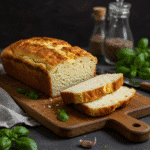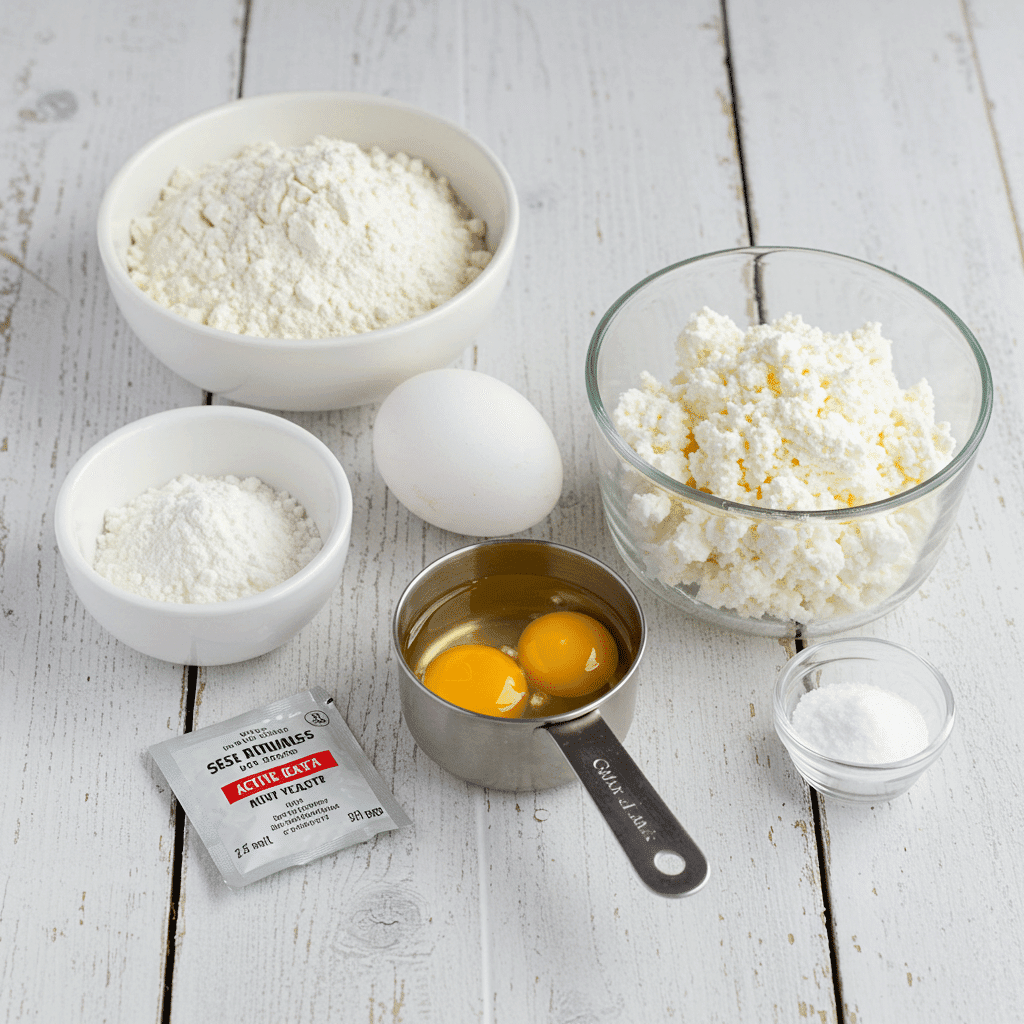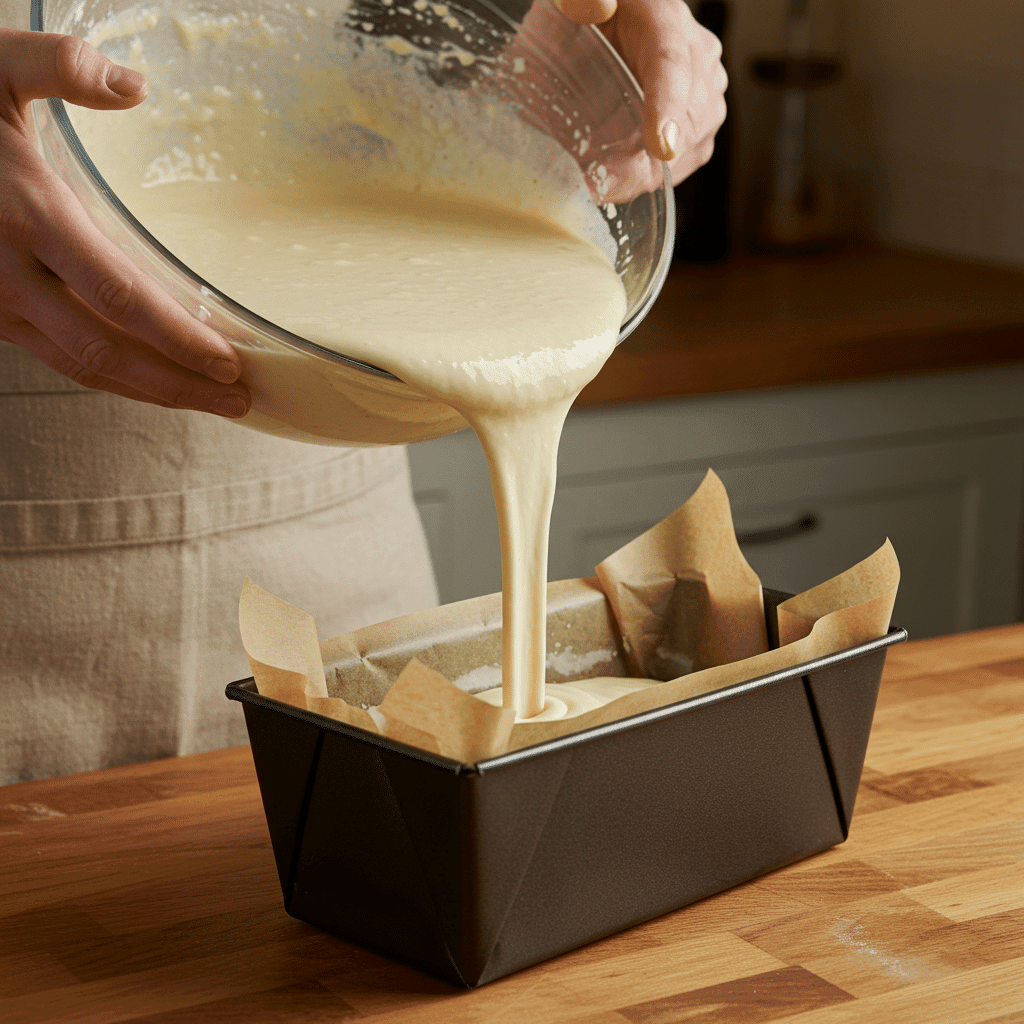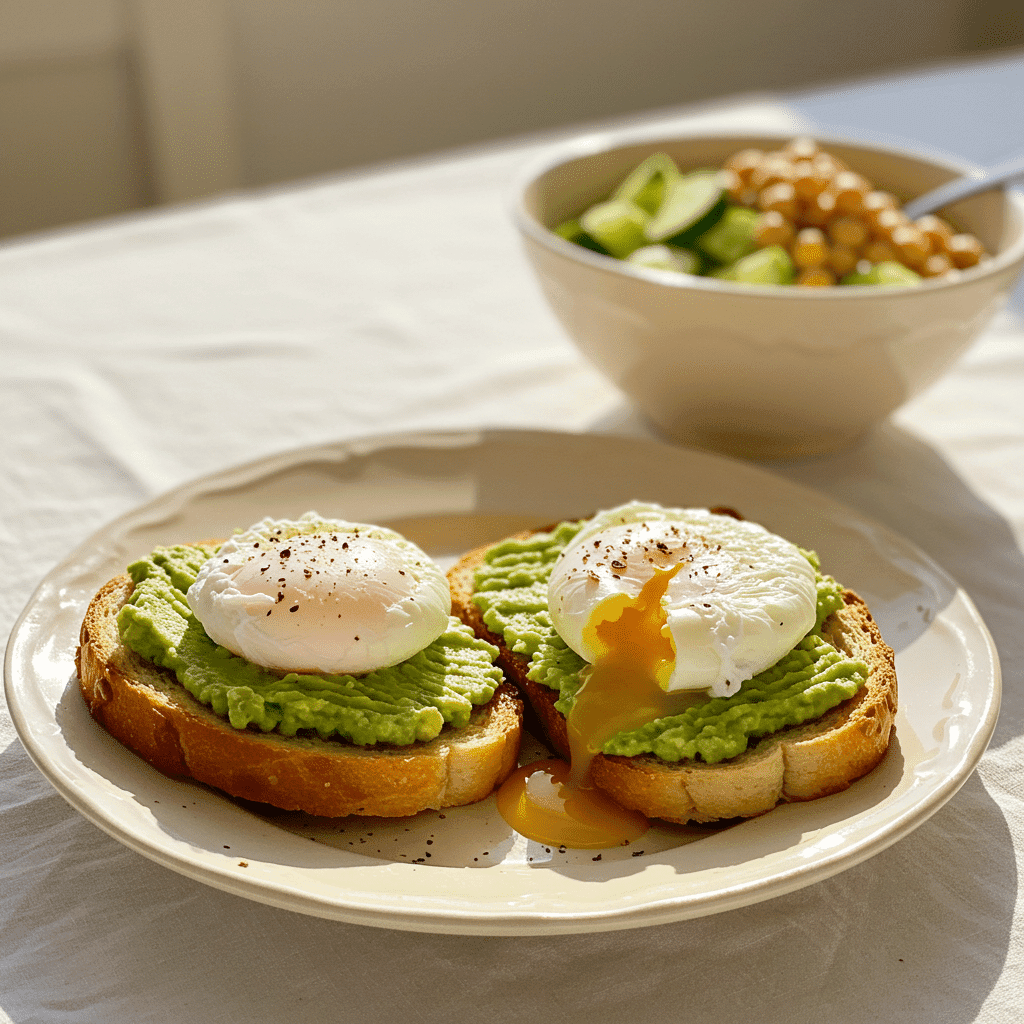If someone told the old me—the girl who’d grab takeout on the way home from work—that I’d one day be baking cottage cheese bread from scratch, I probably would’ve laughed with a mouth full of drive-thru fries. But things change. These days, I’m still all about flavor and comfort, just with a rebellious twist—and this cottage cheese bread checks all the boxes.
The first time I made it, I was knee-deep in one of those chaotic weeks—school lunches, unfinished laundry piles, and not a crumb of bread in sight. I had a tub of cottage cheese, some oats, and a hunch. What came out of the oven was golden, hearty, and so easy I didn’t even have to think about it. Now, it’s a weekly staple in our kitchen.
In this post, I’m walking you through exactly how I make my go-to cottage cheese bread—the kind that’s soft on the inside, toasts up beautifully, and happens to be packed with protein. Whether you’re cutting carbs or just want a new baking obsession, this one’s worth keeping on repeat.
Table of Contents
My Cottage Cheese Bread Discovery
What Got Me Baking This Unusual Bread?
It started with my usual craving for something warm and satisfying that I could slather with peanut butter or avocado—without the crash that came from a white-flour slice. I’d been experimenting with high-protein, low-sugar meals for a while (check out my High Protein No Sugar guide if you’re in that zone too), and cottage cheese was already a favorite snack.
That day, instead of tossing it into a smoothie, I blended it with oats, eggs, and a few basics. The smell coming from the oven was enough to stop my toddler in her tracks. “What’s that?” she asked. I didn’t even know what to call it yet—but when we both bit into the first slice, warm and soft, it didn’t matter. It was just really, really good.
Why Cottage Cheese Bread Became a Staple in My Kitchen
What makes this bread special—besides how ridiculously easy it is—is the texture. Cottage cheese keeps it moist and creamy, while oats give it just enough body without needing flour. No yeast, no kneading, no fuss. And it’s versatile: toast it for breakfast, sandwich it for lunch, or dip it in soup at dinner.
Now, I batch-make it on Sundays as part of my routine (thank you Meal Prep Planning Guide). It stores like a dream and satisfies that “I need bread” feeling in a way that still fits into how I eat now—real food, real flavor, nothing fancy.
Up next, I’ll walk you through exactly what you need and how to make it step by step—no stand mixer required.
Print
Cottage Cheese Bread: Soft, Chewy, and Surprisingly High in Protein
- Total Time: 50 minutes
- Yield: 1 loaf (about 10 slices) 1x
Description
A high-protein, no-fuss cottage cheese bread that’s soft, hearty, and incredibly versatile—perfect for everything from breakfast toast to low-carb pizza night.
Ingredients
- 1 cup cottage cheese (full-fat or low-fat)
- 1 cup rolled oats
- 3 large eggs
- 1 ½ teaspoons baking powder
- ¼ teaspoon salt
- Optional: garlic powder, dried herbs, or nutritional yeast
Instructions
- Preheat oven to 350°F (175°C) and prepare a loaf pan with parchment or light grease.
- Blend cottage cheese and eggs in a blender or food processor until smooth and pourable.
- Add rolled oats, baking powder, salt, and optional flavorings to the blender. Pulse just until combined—do not overmix.
- Let the batter rest for 10 minutes to thicken while the oven finishes preheating.
- Stir batter once more and pour into the prepared pan. Smooth the top with a spatula.
- Bake for 35–40 minutes until golden on top and firm in the center. A toothpick should come out mostly clean.
- Let cool for at least 30 minutes before slicing to avoid a gummy texture.
Notes
To customize, try mixing in chopped herbs, caramelized onions, or cinnamon and honey. This bread stores well and slices better after cooling completely.
- Prep Time: 10 minutes
- Cook Time: 40 minutes
- Category: Pain Maison
- Method: Au Four
- Cuisine: Healthy Comfort Food
Nutrition
- Serving Size: 1 slice
- Calories: 110
- Sugar: 1g
- Sodium: 180mg
- Fat: 6g
- Saturated Fat: 3g
- Unsaturated Fat: 2.5g
- Trans Fat: 0g
- Carbohydrates: 6g
- Fiber: 1g
- Protein: 9g
- Cholesterol: 95mg
Keywords: cottage cheese bread, high protein bread, low carb bread, no flour, easy baking
What You Need to Make Cottage Cheese Bread
Simple Ingredients with Surprising Results
One of the best things about cottage cheese bread is how short the ingredient list is. Seriously, you might already have everything in your fridge and pantry. Here’s what I use, and a few notes to help you pick the best version of each:
- Cottage Cheese (1 cup) – Go for full-fat if you want a richer texture, but low-fat works just fine too. Small curd blends better, but even large curd can be blitzed smooth.
- Rolled Oats (1 cup) – These act as the “flour” here. Quick oats can work in a pinch, but old-fashioned rolled oats give the best texture.
- Eggs (3 large) – These hold everything together and give the bread its lift. Don’t skip or substitute.
- Baking Powder (1 ½ teaspoons) – This is your leavening. Make sure it’s fresh!
- Salt (¼ teaspoon) – Just enough to balance the flavors.
- Optional: Garlic powder, dried herbs, or nutritional yeast – Great for boosting flavor if you’re feeling savory.
Want to make it more protein-packed or grain-free? You can swap oats for almond flour or add ground flaxseed—just keep the cottage cheese as the creamy base.
This bread fits perfectly into high-protein eating, and if you’re just starting on that path, I cover loads more tips in my High Protein No Sugar post.

Step-by-Step Process (No Mixer Needed)
You don’t need a stand mixer, a dough hook, or any fancy kitchen gear to make this cottage cheese bread. That’s the beauty of it—it’s rustic, simple, and relies on just a few tools you probably already have. All you really need is a blender or food processor, a mixing bowl, and a loaf pan. Here’s exactly how I make it, with a few extra notes that’ll help you nail it on the first try.
Step 1: Blend the wet stuff first
Start by combining your cottage cheese and eggs in a blender or food processor. This is the creamy base of the bread. Blend for about 20 to 30 seconds, just until smooth. The texture should be silky and pourable. If your cottage cheese is on the dry side, you can add a tablespoon of milk to help it along. This step ensures the eggs are fully incorporated and the cottage cheese is broken down, giving the bread a soft, even texture once baked.
Step 2: Add the dry ingredients
Next, add in your rolled oats, baking powder, and salt directly into the blender. If you’re adding extras like garlic powder, dried herbs, or nutritional yeast, this is the time. Pulse the mixture just until everything is combined. Don’t blend too long—you want the oats to be distributed evenly without turning them into a floury paste. You’re aiming for a thick batter, not a runny liquid or a dense dough.
Step 3: Rest the batter
This part’s easy—just walk away for 10 minutes. Letting the batter sit gives the oats time to soak up the moisture, which helps thicken the mixture and makes the final loaf sturdier and more sliceable. During this time, preheat your oven to 350°F (175°C) and line your loaf pan with parchment paper or give it a light greasing. This makes cleanup easier and helps the bread release beautifully once it’s done baking.
Step 4: Pour into the loaf pan
Once the batter has rested, give it one quick stir to make sure nothing has settled at the bottom. Then pour it into your prepared loaf pan. Use a spatula to spread it out evenly, smoothing the top as best you can. The batter won’t rise a ton, so what you see going into the oven is close to how the finished loaf will look.
Step 5: Bake to golden perfection
Place the pan in the center of your oven and bake for 35 to 40 minutes, or until the top is lightly golden and the center feels firm to the touch. Every oven runs a little differently, so start checking around the 33-minute mark. A toothpick inserted in the middle should come out mostly clean with just a few moist crumbs—no wet batter.
Step 6: Let it cool completely before slicing
This is the hardest part, but it’s worth it. The bread continues to set as it cools, and slicing it too soon can leave you with a gummy texture. I like to wait at least 30 minutes before cutting into it. You can always toast it if you want that fresh-from-the-oven warmth again.
Tip: If your batter looks too runny, add a tablespoon of oats. If it’s too thick, a splash of milk does the trick.
The whole process takes maybe 10 minutes of hands-on time, which makes it perfect for batch baking. If you’re into prepping meals ahead like I am, this loaf is a lifesaver alongside other staples I cover in my Meal Prep Planning Guide.

Fun Twists on Cottage Cheese Bread
Flatbread, Pizza Dough & More
One of the things I love most about this recipe is how flexible it is. Sure, it starts out as cottage cheese bread—but once you get the hang of the batter, you can use it in all sorts of ways.
Let’s answer the first big question I get all the time:
Can you make flatbread with cottage cheese?
Absolutely. Just spread the batter into smaller rounds on a lined baking sheet—about ½ inch thick. Bake at 375°F for 20–25 minutes until golden and sturdy enough to lift. You’ll get soft, slightly chewy flatbreads that are perfect for wraps, dips, or breakfast sandwiches.
Can I make pizza dough with cottage cheese?
Yes—and you’ll be surprised how well it holds up! To make a pizza base, spread the batter in a circular or rectangular shape on a parchment-lined pan. Pre-bake for 20–25 minutes until firm, then top with sauce, cheese, and whatever you like. Return to the oven for another 10–12 minutes until bubbly.
My family loves this version with roasted veggies and a sprinkle of crushed red pepper. It’s cheesy, sturdy, and lower in carbs than your typical crust.
For a cozy weeknight dinner, pair this crust with toppings from my Creamy Chicken Mushroom Recipe—just spoon that savory mix right on top of the crust and broil for a few minutes. You’re welcome.
Best Ways to Serve It
When I’m not turning this batter into pizza or flatbread, I’m toasting slices of the original loaf and getting creative. Here are a few easy pairings we love in my house:
- With smashed avocado + chili flakes
- Topped with almond butter + banana
- As the base for open-faced egg salad or tuna melt
- With a bowl of soup or chilled noodles
Yes, it even works with cold meals. Try it next to something flavorful like Cold Noodles with Peanut Sauce—the creamy bread and punchy sauce balance each other out perfectly.
If you’re feeling adventurous, add herbs, caramelized onions, or sun-dried tomatoes right into the batter. Or go sweet with a touch of cinnamon and honey. Once you get this recipe down, the variations are endless.

Keeping It Fresh & Healthy
Nutritional Breakdown & Carb Count
Let’s talk about what’s in your slice. One of the most common questions I get is:
How many carbs are in cottage cheese flatbread?
If you slice your loaf into 10 even pieces, each one comes out to around 6 grams of carbs and about 9 grams of protein. It’s light enough for those watching carbs, but still hearty enough to feel like a real meal.
Each slice also has roughly 110 calories, 6 grams of fat, and a touch of fiber from the oats. Not bad for something that skips flour altogether and still delivers that soft, bread-like feel. Plus, there’s zero added sugar—just wholesome fuel to carry you through the day.
If you’re looking to keep meals balanced, I love pairing this bread with something refreshing like my Cucumber Chickpea Salad—it adds crunch, color, and plant-powered goodness to the plate.
Storing and Freezing Tips
This bread was practically made for batch cooking. Here’s how to keep it fresh:
- In the fridge, it stays soft and sliceable for up to 5 days. I recommend slicing it first and storing in an airtight container.
- For freezing, wait until the loaf has completely cooled, slice it, and freeze with parchment between each piece. That way, you can just grab what you need and pop it into the toaster.
On busy weeks, I pull out a couple of slices in the morning and by lunch, they’re ready to be grilled or toasted. It’s also a great partner to one of my go-to meal prep favorites like Cold Noodle Salad Recipes.
FAQs: Cottage Cheese Bread Questions Answered
Can you make flatbread with cottage cheese?
Yes, and it’s actually one of the easiest ways to transform your basic cottage cheese bread into something totally different. Just spoon the batter into small rounds on parchment paper and bake until golden. You’ll end up with soft, flexible flatbreads that are perfect for wraps, sandwiches, or scooping up dips. It’s a fun way to stretch your cottage cheese bread beyond just slices.
What makes cottage bread different?
Classic cottage bread is a round, domed loaf often made with white flour and a mild, slightly sweet flavor. But cottage cheese bread flips that idea by making cottage cheese the star ingredient. It adds moisture, boosts protein, and eliminates the need for yeast or added sugar. The result is a modern, high-protein bread that works as a smart alternative to store-bought loaves.
Can I make pizza dough with cottage cheese?
Yes—you can use the cottage cheese bread batter as a pizza crust with just a slight tweak. Spread it thin on parchment, bake until firm, then add your toppings and bake again. You get a soft, cheesy base that holds together and doesn’t taste “healthified” even though it kind of is. It’s one of my favorite ways to repurpose this dough for weeknight dinners.
How many carbs are in cottage cheese flatbread?
Each slice of cottage cheese bread averages around 6 grams of carbs when the loaf is cut into ten. It’s lower-carb than most traditional breads, and with about 9 grams of protein per slice, it also helps keep you full. Whether you’re following a low-carb lifestyle or just looking to balance your meals better, it’s a great alternative that doesn’t feel like a compromise.
Conclusion
This cottage cheese bread has earned a permanent spot in my kitchen—and honestly, it surprises me every time just how versatile it is. I’ve used it for breakfast toast, lunch wraps, and even pizza night, and it’s never let me down. It’s become my not-so-secret weapon for quick meals that still feel nourishing.
The real beauty of cottage cheese bread is how accessible it is. You don’t need fancy flours or a stand mixer—just a few basics, a blender, and an oven. And once you’ve made it once, you’ll want to keep playing with it. Add herbs. Make it sweet. Try it as buns or bake it in muffin tins.
If you’re curious about how I twist simple ingredients into everyday comfort, follow along over on Pinterest where I’m always sharing new ways to use staple recipes like this cottage cheese bread.
Because when you find a recipe that’s this easy, this satisfying, and still healthy? That’s worth baking again and again.